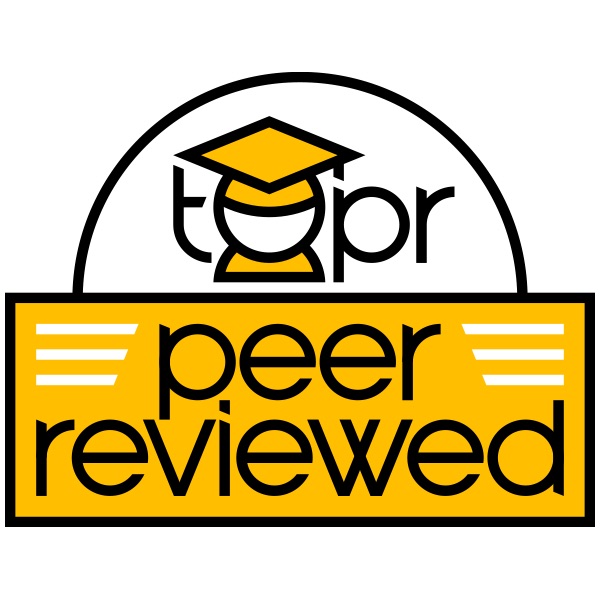
Instructor Self-Assessment Journal (ISAJ) aims to create a positive learning environment that is necessary for student success. In this environment students build their academic skills, learn how to learn, and develop the confidence to face challenges. The achievement of such an environment needs (in addition to setting clear expectations and having a good organized course) a comprehensive approach that revolves around fostering engagement, motivation, and a profound sense of belonging. A component of this approach includes the establishment of strong relationships between educators and students (García-Moya et al., 2019). Building rapport may be uneasy in large classes or in online settings where face-to-face interaction is limited, however, it remains crucial to achieve. The authors in (Frisby et al., 2010) conclude that relationship looks to be a positive interpersonal construct utilized in the instructional setting. Still, it remains unknown exactly which instructor behaviors lead to building relationships with students. So, we introduce SAJ based on our experiences. We agree that instructors can wield major influence in shaping students’ attitudes towards learning (Johnso, 2017), and by demonstrating enthusiasm and passion for the subject matter, instructors can ignite a spark of curiosity and interest in their students (Sarwono et al., 2020). According to Chen and Liu (2018), instructors who teach online courses and engage in self-assessment often redesign course content, activities, and teaching methods that better support student learning.
Strategy Implementation
We should prioritize building positive relationships with our students, demonstrating genuine interest in their success and well-being. Striving to create a classroom atmosphere that is inclusive and safe for all students, and tailoring learning experiences to accommodate their interests and learning styles can be helpful. Additionally, if we foster engagement and participation by incorporating interactive and hands-on activities, encouraging students to ask questions, share ideas, and explore new concepts freely we could improve their interests in the course. Providing constructive and timely feedback on their work helps highlight their progress while also identifying areas for improvement. Moreover, we can’t ignore the importance of a growth mindset; encouraging students to view challenges as opportunities for learning and development. We often celebrate their successes and sharing that celebration with them could bolster their confidence and motivation. Creating a sense of belonging is vital, and can be achieved through collaborative activities, group projects, and a supportive peer network. Valuing diversity within the classroom, promoting mutual respect and taking proactive measures to prevent cyberbullying is important so the learning experience is safe. Leveraging technology is inevitable. Integrating educational apps and multimedia resources enhances engagement and learning. Giving autonomy may be challenging yet supports the idea to empower students and take responsibility in their learning journey. The catalyst for all those actions is keeping communication channels open. We provide regular updates, announcements, and feedback sessions. Lastly, we need to encourage reflective practices, prompting students to assess their strengths and areas for growth, fostering a culture of continuous self-improvement and learning.
Strategy: Instructor Self-Assessment Journal (ISAJ)
The following form of ISAJ can help with acknowledging, tracking, and assessing progress against previously mentioned ideas. The instructor can identify areas of strength and areas for improvement in the utilization of the strategy.
- Building Positive Relationships:
- Have I provided opportunities for students to reflect on their interactions with classmates and the instructor?
- Action: Use Zoom or another conference tool annotation and whiteboard tools, discussion boards, peer instruction and group discussions, etc.
- Have I encouraged students to set personal goals related to building positive relationships in the classroom?
- Action: Practice active listening, encourage attendance and participation, use referrals, etc.
- Action: Practice active listening, encourage attendance and participation, use referrals, etc.
- Have I provided opportunities for students to reflect on their interactions with classmates and the instructor?
- Creating a Welcoming Environment:
- Have I facilitated discussions on creating an engaging classroom atmosphere?
- Action: Use online discussion boards, virtual meetings, annotation tools, chat feature, anonymous polls, or surveys about feedback on inclusivity and classroom climate, etc.
- Action: Use online discussion boards, virtual meetings, annotation tools, chat feature, anonymous polls, or surveys about feedback on inclusivity and classroom climate, etc.
- Have I facilitated discussions on creating an engaging classroom atmosphere?
- Personalized Learning
- Have I offered tools for students to identify their learning paths?
- Action: Use adaptive/personalized software, learning analytics, observation and Interaction, personalized interventions, etc.
- Have I incorporated opportunities for students to explore topics of career interest relevant to the curriculum?
- Action: Integrate career content into discussions and activities, bring guest speakers from industry, use career resource centers and online resources, etc.
- Action: Integrate career content into discussions and activities, bring guest speakers from industry, use career resource centers and online resources, etc.
- Have I offered tools for students to identify their learning paths?
- Encouraging Engagement and Participation:
- Have I implemented methods to track student participation in class activities and discussions
- Action: Use online polls or surveys, peer evaluation, seating charts, etc.
- Have I provided prompts for students to reflect on the impact of engaging activities on their learning?
- Action: Use Debriefing sessions, metacognitive prompts integration, concept maps, etc.
- Action: Use Debriefing sessions, metacognitive prompts integration, concept maps, etc.
- Have I implemented methods to track student participation in class activities and discussions
- Promoting a Growth Mindset:
- Have I encouraged students to view challenges as opportunities for growth?
- Action: Discuss growth mindset, share resources, set incremental goals, normalizing struggle, etc.
- Have I recognized and celebrated student successes to foster a positive mindset in the classroom?
- Action: Verbally praise and email encouragement messages, offer class incentives, etc.
- Action: Verbally praise and email encouragement messages, offer class incentives, etc.
- Have I encouraged students to view challenges as opportunities for growth?
- Creating a Sense of Belonging:
- Have I facilitated collaborative projects that promote teamwork and a sense of community?
- Action: Project-based learning, group assignments, cross-curricular projects, community service projects, etc.
- Have I integrated discussions on the value of diversity into the curriculum?
- Action: Invite diverse Guest experts, multicultural projects, and research, etc.
- Action: Invite diverse Guest experts, multicultural projects, and research, etc.
- Have I facilitated collaborative projects that promote teamwork and a sense of community?
- Leveraging Technology:
- Have I introduced students to educational apps and online resources to enhance learning?
- Action: Promote Open Educational Resources, Khan Academy, Kahoot, GeoGebra, Yellowdig, etc.
- Have I provided feedback on assignments through digital platforms?
- Have I introduced students to educational apps and online resources to enhance learning?
- Encouraging Autonomy and Responsibility:
- Have I supported students in setting academic and personal goals with progress tracking?
- Have I promoted reflections on the choices students make in their learning journey and their outcomes?
- Action: Written, verbal, software using instant feedback, etc.
- Action: Written, verbal, software using instant feedback, etc.
- Continuous Communication:
- Have I maintained open communication channels for students to ask questions and provide feedback?
- Action: Use live and verbal interactions, repetition of reminders, avoid assumptions about students knowing how to communicate, etc.
- Have I shared regular course updates with students?
- Action: Announce updates, discuss rationale behind an update, etc.
- Action: Announce updates, discuss rationale behind an update, etc.
- Have I maintained open communication channels for students to ask questions and provide feedback?
- Reflective Practices:
- Have I encouraged students to write weekly reflections on their learning experiences and challenges?
- Action: Model and share a reflection.
- Have I facilitated peer feedback sessions to promote constructive learning interactions among students?
- Action: Facilitate groups, peer review, etc.
- Have I encouraged students to write weekly reflections on their learning experiences and challenges?
Artifact: Integrated Technology
We believe that integrating technology effectively supports ISAJ. The most important platform is the Learning Management System (LMS). LMS provides a centralized hub for course content, assignments, assessments, and communication. LMS allows instructors to personalize learning experiences by adapting content delivery, tracking student progress, and providing feedback (Alamri, Watson, & Watson, 2021). Table 1 shows how to capitalize on Canvas utilization as an example of LMS.
Table 1. Canvas example to support ISAJ.
| Checklist Item | Notes |
| Modules | – To structure the course as a sequence of modules. |
| Syllabus | – Syllabus link allows to inform about expectations, policies, etc. |
| Assignments, Quizzes | – They allow for different formats of assessments and use use of SpeedGrader feature for manual grading or machine grading. |
| Announcements | – Announcements are valuable to deliver quick communication to all or individual sections. |
| Grades | – Grades link is the gradebook for students to see their progress. |
| Discussions, groups, Collaborations, Chat, Zoom, Microsoft Teams, messaging | – Active use fosters a sense of community and culture within the large class. |
| Feedback, Analytics | – Personalized feedback can be tailored to individual student progress. |
| Apps | – Different apps can be integrate with LMS. |
Artifact: Sharing Resources
ISAJ requires us to teach beyond the main subject and share ideas and resources that benefit the student. Below are Figures 1-5 that give examples on what can be used.
Figure 1: Announcement to share ideas beyond the subject.
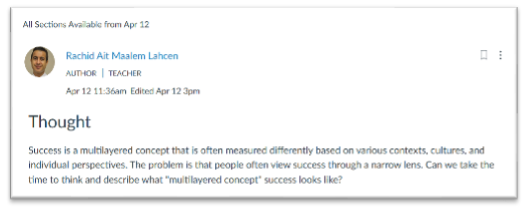
For example, students in a college algebra course may not expect to discuss the multilayered concept of success.
Figure 2: Organized first module with resources page.
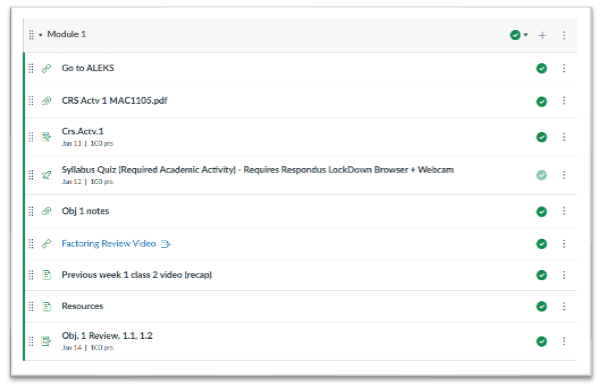
The first module gives a first impression of the course.
Figure 3: Resources page example.
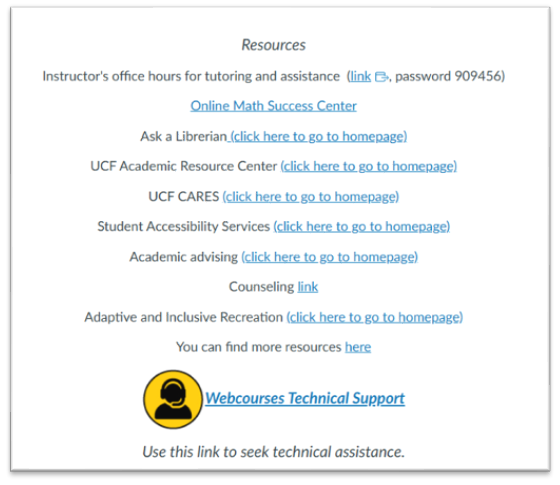
Figure 4: Asynchronous discussion example.
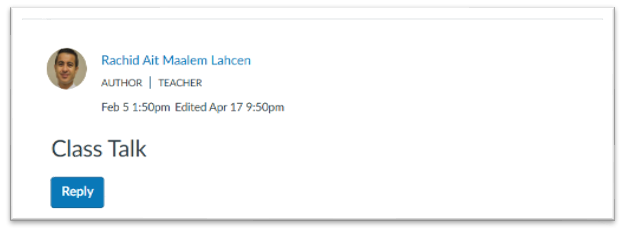
Figure 5: Growth mindset video.
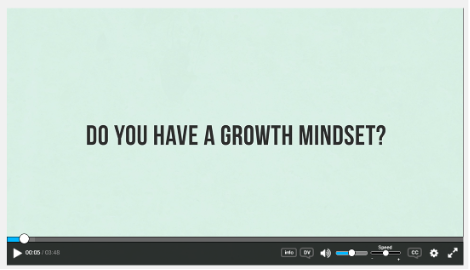
Potential Challenges or Obstacles:
Instructors may encounter challenges in objectively evaluating various sides of ISAJ or establishing relevant goals for several reasons, one of which is often the absence of adequate training in the practice of self-reflection. So, we suggest Table 2 instrument that we use as a method for evaluation. Largely, self-assessment may be influenced by personal biases which could affect negatively the outcomes.
Table 2: ISAJ evaluation instrument.
| Instrument | Description |
| Surveys | Surveys administered to students |
| Peer Observation | Fellow instructor observer |
| Self-Assessment | Reflective process |
| Learning Outcomes Assessment | Evaluation of student learning outcomes |
| Documentation Review | Review of documentation such as lesson plans, assignments, and communication logs. |
| Data Analysis | Quantitative or qualitative analysis of attendance records, participation rates, and assessment scores to compare data against control groups or previous experiences |
The main problem that we see is that ISAJ strategy demands significant time and effort for planning, implementation, and revisions. The strategy might initially appear to add an extra burden to already packed instructors’ schedules and heavy workloads. Consequently, we recommend viewing the strategy as an essential component of the teaching process and starting with small steps. Instructors are already employing effective strategies to support their students, and deliberate implementation of ISAJ could involve integrating few elements, such as weekly reflections, which may require 15 to 30 minutes per week. At times, instructors may experience discomfort when critically analyzing their own teaching practices. To address this, we recommend seeking faculty development opportunities, such as participation in workshops and conferences, which can provide valuable support and guidance. It’s important to recognize that critical self-reflection is an integral aspect of professional development.
Conclusion
By implementing ISAJ, educators can create a positive and empowering learning environment where students feel valued, motivated, and supported in their educational journey. Positive student perceptions can also promote resilience and a lifelong love for learning. The journal includes steps that may look to be daunting or require much planning, yet we encourage to start with fewer items and build on them. We often practice many parts without acknowledging. The purpose here is to be aware of the progress, plan for interconnectedness of ISAJ parts, and evaluate which parts are more effective. There is no doubt that for educators to play a pivotal role in fostering positive perceptions among students they need a multifaceted approach. Although the research lacks in evaluation and definition of such multifaceted approach we believe that building positive relationships based on genuine care and respect, creating an engaging learning environments tailored to diverse needs, encouraging active participation, promoting a growth mindset, celebrating successes, fostering a sense of belonging, leveraging technology tools, encouraging autonomy and responsibility, maintaining open communication channels, promoting reflective practices, etc., the students will feel empowered to thrive academically and perceive positively the learning journey.
Scholarly Reference(s)
Alamri, H. A., Watson, S., & Watson, W. (2021). Learning technology models that support personalization within blended learning environments in higher education. TechTrends, 65(1), 62–78. https://doi.org/10.1007/s11528-020-00530-3.
Campbell, J. C., & Mainstone-Cotton, S. (2022). Building positive relationships in the early years: conversations to empower children, professionals, families and communities. Routledge.
Chen, L.-T., & Liu, L. (2018). Instructor’s self-assessment of content design in online courses. International Journal of Technology in Teaching and Learning, 14(1), 24-41.
Frisby, B. N., & Martin, M. M. (2010). Instructor-Student and Student-Student Rapport in the Classroom. Communication Education, 59(2), 146–164. https://doi.org/10.1080/03634520903564362.
García-Moya, I., Moreno, C., & Brooks, F. M. (2019). The ‘balancing acts’ of building positive relationships with students: Secondary school teachers’ perspectives in England and Spain. Teaching and Teacher Education, 86. https://doi.org/10.1016/j.tate.2019.102883.
Johnson, D. (2017). The role of teachers in motivating students to learn. Journal of Graduate Studies in Education, 9(1), 46–49.
Parker, D. (2019). Building bridges: Engaging students at risk through the power of relationships (Building Trust and Positive Student-Teacher Relationships) (1st ed.). Solution Tree.
Sarwono, A. Y., Murtono, M., & Widianto, E. (2020). The teacher’s role in developing student social attitudes. International Journal of Elementary Education, 4(3), 384. https://doi.org/10.23887/ijee.v4i3.28684
Citation
Ait Maalem Lahcen, R., Mohapatra, R. (2024). Instructor Self-Assessment Journal to Raise Positive Student Perceptions. In deNoyelles, A., Bauer, S., & S. Wyatt (Eds.), Teaching Online Pedagogical Repository. Orlando, FL: University of Central Florida Center for Distributed Learning.